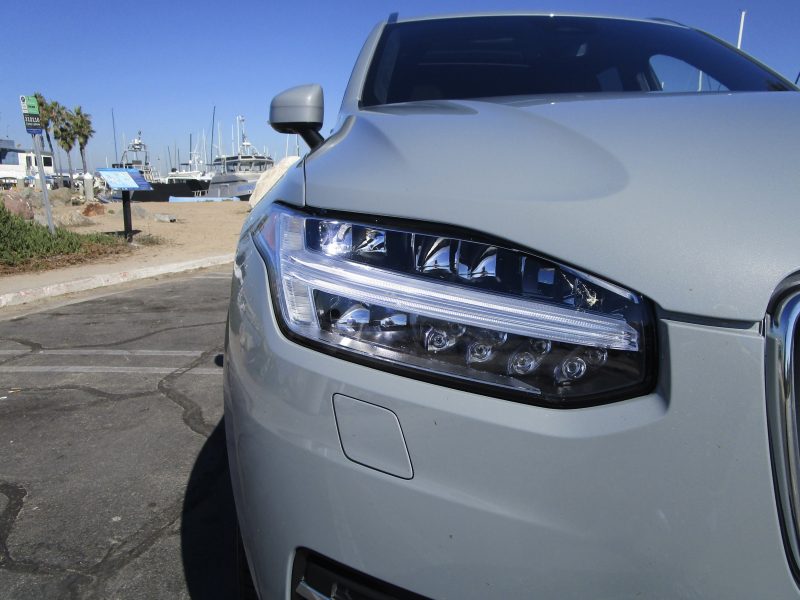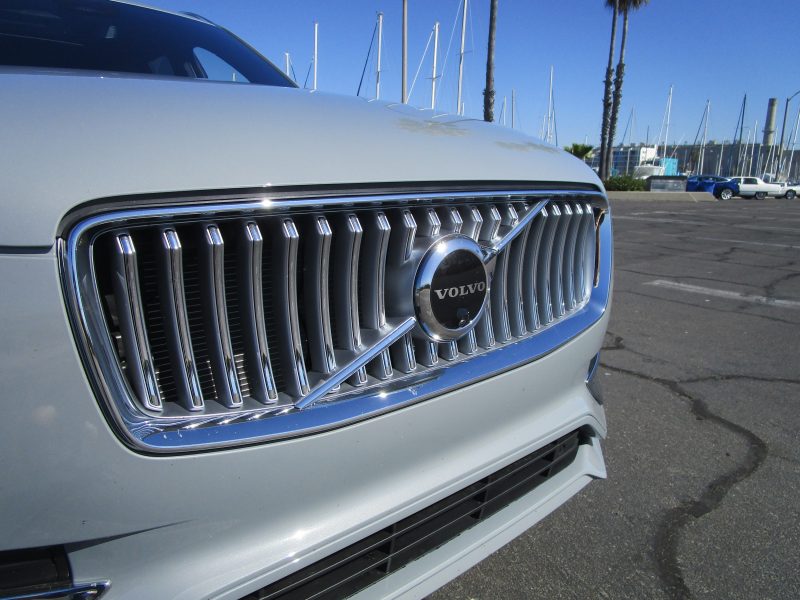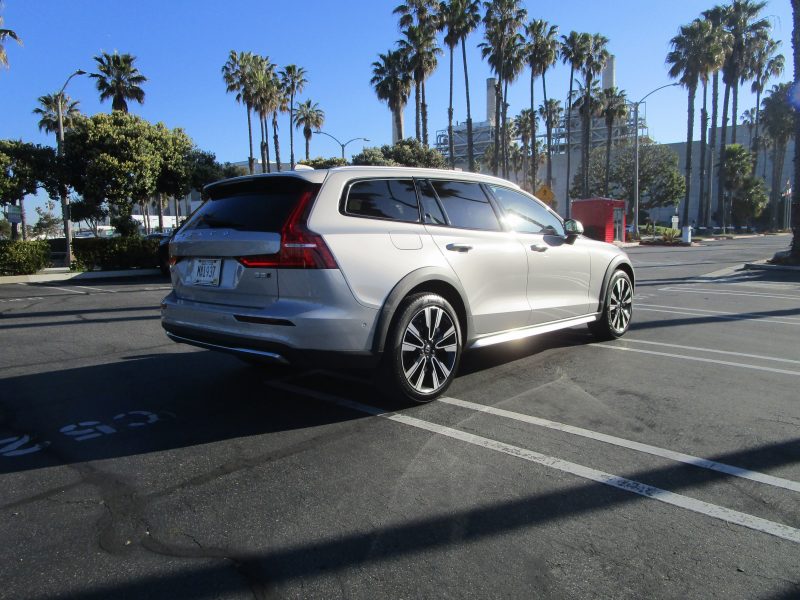Volvo is a car company obsessed with safety. The company is famous for telling its customers that it wants to eliminate fatalities in its vehicles by the end of the decade, allowing it to do what no other firm has done so far.
But is such an ambition realistic? Well, if the company’s own timeline is to be believed, then the answer is “yes.” Volvo is highly likely to develop new and profound technology before 2035, much of which seems futuristic, even from today’s AI-dominated perspective.
Advanced Sensor Technology
The lowest-hanging fruit will likely be the inclusion of more advanced sensor technology on Volvo vehicles. The enhanced kit will allow vehicles to scan more of the road and detect hazards as they arise in real-time without having to spend time processing or reacting.
The EX90 is already embodying much of this technology and including LiDAR (Light Detection and Ranging) as a standard component. This technology measures the distance between vehicles with more accuracy, feeding information into a central computer to crunch the data and send additional signals to the driver and wheels.
Advanced sensors are getting better at detecting specific obstacle types in the environment. For example, Volvo envisions a day when these technologies can distinguish between objects on the road, like:
- Deer
- Oncoming vehicles
- Same-lane vehicles
- Cones and other road furniture
- Barriers
- Lines
- Hatched areas
Understanding these will give onboard computers a more comprehensive view of the current surroundings and context. These will then enable more signals in the cockpit and even permit the computer to take over control of the vehicle in the event of an emergency.
Autonomous Driving Integration
We’re also witnessing the development of advanced autonomous driver integration into many Volvo vehicles. The company will continue to develop its use of NVIDIA’s DRIVE Orin system and in-house software to provide a more seamless driving experience.
The hope is that these technologies will make it less likely that vehicles will crash. Granted, there will still be situations where people need a lawyer for a car accident, but these Volvo hopes will have less to do with its vehicles, and more to do with other drivers’ behaviors on the road.
Volvo will likely start where Tesla did with a type of highway pilot approach. This system will work in a highly predictable and safe highway environment, allowing drivers to take their hands off the wheel and let the car do everything for them. Volvo will likely verify the technology on the main roads first and then expand its network to include more trunk roads across the country. Like Tesla, it will take time for the firm to develop the software for city driving. However, it believes it will be possible soon because of increased data collection and better machine learning.
Later, as it develops its software further, the capabilities of the system will continue to evolve further. Existing vehicles will receive over-the-air updates, allowing cars to become more capable with every passing year as the technology evolves.
Of course, Volvo isn’t promising fully-fledged autonomous driving any time soon. The company knows that that remains a significant challenge and something it is going to have to deal with in the future. But for now, things look promising.
For many legal experts, the problem of autonomous driving is substantial. One issue is who is to blame when the vehicle crashes. Is it the system or the driver?
The other issue is the actions of drivers inside the car. Current systems put them at fault if they don’t keep their hands close to the wheel at all times, ready to take over. But in the future, that need could go away. Are passengers then responsible for the behavior of their vehicles?
Redundant Safety Systems
Volvo is also investing in numerous redundant safety systems to complement the existing setup on its vehicles. These will kick in when others fail or don’t recognize upcoming hazards.
For example, Volvo is developing backup systems for its cars’ brakes. These will essentially lock down the vehicle in the unlikely event of a primary systems failure.
The company is also hoping to do something similar for steering. It believes that it is possible to provide drivers with failsafe solutions that continue operating, even when key components fail completely.
The hope is that these systems will make it more likely that the company will reach its goal of autonomous driving. It wants to engineer a situation where driving becomes easier over time, and where computers can do everything on the driver’s behalf without requiring interventions all the time.
Zero Collisions
Zero collisions is another of Volvo’s goals by 2035. The company wants to use advances in AI and sensor functionality to reduce the risk of collisions entirely.
It believes it can do this by using data-based learning technologies. These will allow the vehicle to acquire knowledge from its mistakes and share these with the rest of the fleet. The hope is that the technology will provide cars with a kind of common sense at scale, allowing them to navigate unique situations, even if they haven’t seen anything exactly the same before.
Zero collisions technology is hyper-ambitious and only Volvo has stated that it is publicly working on such technology. However, many of the precursors are already in place. Now, it is just a case of upgrading the brains of the system to make it better able to deal with unfamiliar situations on the road and protect passengers.
The Safe Space Technology package will further enhance safety for passengers. This group of technologies on its vehicles will allow the carmaker to make the entire road a safer space, with each of its vehicles actively contributing.
Emotion-Aware Vehicles
Another advance (though highly speculative) is that Volvo could continue improving its “emotive aware” technology. The idea here is to monitor driver states during travel to detect problems that may make accidents more likely, like stress, fatigue, or alcohol consumption.
For example, we could see the development of vehicles that provide alerts to drivers when they detect their stress levels rising. We could also see vehicles refusing to start if people have alcohol in their systems, something Volvo is already toying with on many of its cars.
The car could then provide various solutions to help. For example, if a driver is stressed, it could adjust the ambient LED colors or put on some soothing music. It could also direct tired drivers to the nearest location for coffee or a place to stop and recharge before carrying on.
Health Monitoring Systems
In a similar vein, Volvo may also introduce health monitoring systems to its vehicles by 2035. These could provide drivers and passengers with real-time updates on their vital signs and how they are managing on the road.
One problem at the moment is people suffering heart attacks at the wheel, especially on long and stressful journeys after fatty meals. These can sometimes put dozens of people at risk, including passengers and other road users.
Healthcare monitoring technology could help to prevent these situations. If the vehicle believes the driver or passenger is at risk of an imminent heart attack, it can suggest stopping and automatically call an ambulance on their behalf. These systems mean that help could potentially arrive at the exact moment problems arise.
Personalized Safety Pods
Personalized safety pods are a highly exotic technology, but they are also something Volvo is considering adding to its vehicles. The company wants to introduce crash safety zones that adjust seating positions and airbags to better absorb incoming energy in collisions.
This push is backed by the company’s internal science and research which shows that making these micro adjustments is helpful in the event of a collision. The company can change parameters according to the specific height, weight, and health profile of each passenger in milliseconds, reducing the risk of injuries like whiplash that are common when people have to make do with standard approaches.
Self-Healing Materials
Self-healing materials could also be a feature on new Volvo vehicles by 2035. It is possible that the company will decide to incorporate these technologies into its cars, allowing them to recover from impacts.
Likely, these materials will require nanotechnology. The company will need to work with partners to develop body panels and interior linings that can self-repair, even after a crash or scuff damage.
Predictive Safety AI
Finally, Volvo will continue to upgrade its already impressive AI systems to make them better at predicting what might happen next on the road. It will draw on millions of examples of similar situations on the road and feed these into its collision likelihood metrics, intervening when it feels a crash is imminent.
Volvo will undoubtedly use all the data it can at its disposal, including the weather, road conditions, and how busy it is. These metrics will then feed into its crash avoidance systems, giving it a probability that a crash might occur at any time.
The development of these technologies is exciting and means that motoring will become safer going into the future.
Explore Volvo vehicle reviews from the site over here
And check out our latest Volvo reviews:
2024 Volvo V60 Cross Country B5 AWD Ultimate road test review by Ben Lewis

CRD Auto Industry Insider may contain helpful and on-topic partner content that auto enthusiasts and car shoppers find valuable.


















